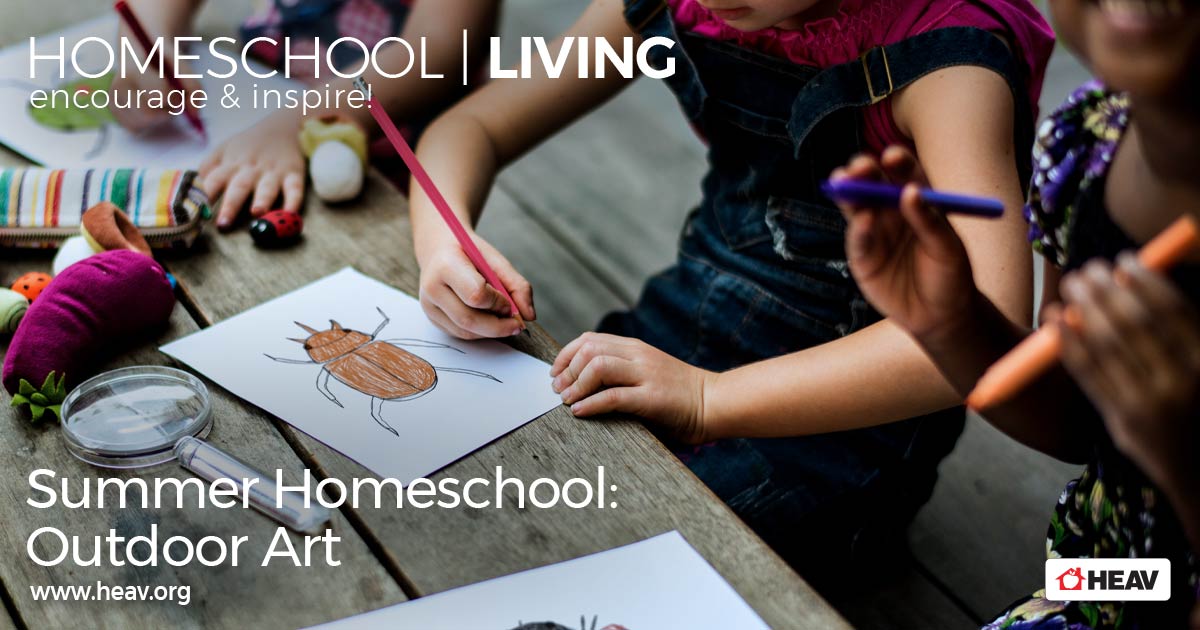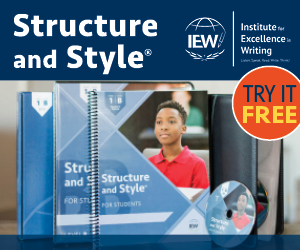Summer Homeschool: Outdoor Art
The freedom of summer lends an air of excitement and enthusiasm to outdoor play that is beautifully captured with outdoor art activities. Give your summer homeschool an outlet to exercise creativity as well as bodies, social skills, and more with these summer homeschool outdoor art ideas.
Outdoor Art Projects
Squirt painting is an excellent outdoor art activity for younger children, and can really be anything you want it to be. Use any squirting tool or toy you have on hand–spray bottles, bath toys, squirt guns, etc.–and almost any paint. As long as you water down the paint sufficiently, you’ll be able to use it effectively for squirt painting, but you’ll want to consider how and where you’re using the paint to determine what type will best suit you. (Washable watercolors are easy to clean up.)
Land art is a great way to explore your environment and exercise some creativity while providing an outlet for littles who seem to want to collect every cool rock and stick they find. Take some time to explore your surroundings–in your backyard, at the park, or on a hike–and collect whatever natural elements seem interesting. Pay attention to color and texture, but don’t damage wildlife by pulling bark off of trees or breaking off live foliage.
Focus on fallen leaves or blossoms, pine needles and cones, sticks, and rocks, and use that patch of moss or interesting root pattern under a tree as your foundation or background. Create whatever colorful arrangement or interesting structure you like, and take pictures to document it if you want to.
This is one of those completely free outdoor art family activities, and you can utilize the time however best fits your family–with a laid-back approach to exercising creativity or incorporating more educational elements like a scavenger hunt or a focus on specific colors, types of material, or environments. This can also be a great way to help teach younger children to explore, examine, and learn about the natural elements, but to leave them behind in the environment where they were found.
This collaborative mural is a great way for your kids to experiment with different mediums and color layering and to share that experience with their friends. This activity works especially well if you have neighboring friends to share it with, but you can easily do it on your own, even with one child. You’ll need to prep the outdoor art area and paints, especially if you have younger children participating, but other than that, this is a hands-off activity for the parents. Giving kids the freedom to experiment creatively and to learn to work together and share space is essential to their development, and a wonderful skill to practice in your summer homeschool.
Nature weaving is a great way to encourage the collector in your little as they scavenge the backyard for flowers, leaves, and other interesting nature finds. The little looms are also a lovely way for kids to share their collections with family members and friends. (If your little has ever insisted on saving a wilting bunch of dandelions for grandma, this activity is a perfect alternative!)
This water balloon painting activity is a perfect hot weather activity, combining art and water play. It could easily be modified to make multiple “paintings” by taping more and smaller pieces of paper to the pool, and would make a wonderful creative activity for a kids summer birthday party. Or, take the opportunity to experiment with a bit of color theory as your kids learn how the colors combine and make new colors as the painted balloons roll around. Cleanup is easy with a garden hose and some splash time in the pool!
For even more creative learning ideas for your summer homeschool, check out this Homeschool Living—”5 Things to Do in Your Summer Homeschool.”
Megan Mora Fuentes
Enjoy this article?
For more insightful and encouraging homeschool related articles, homeschool living tips, and homeschool connections, visit our HEAV blog.










